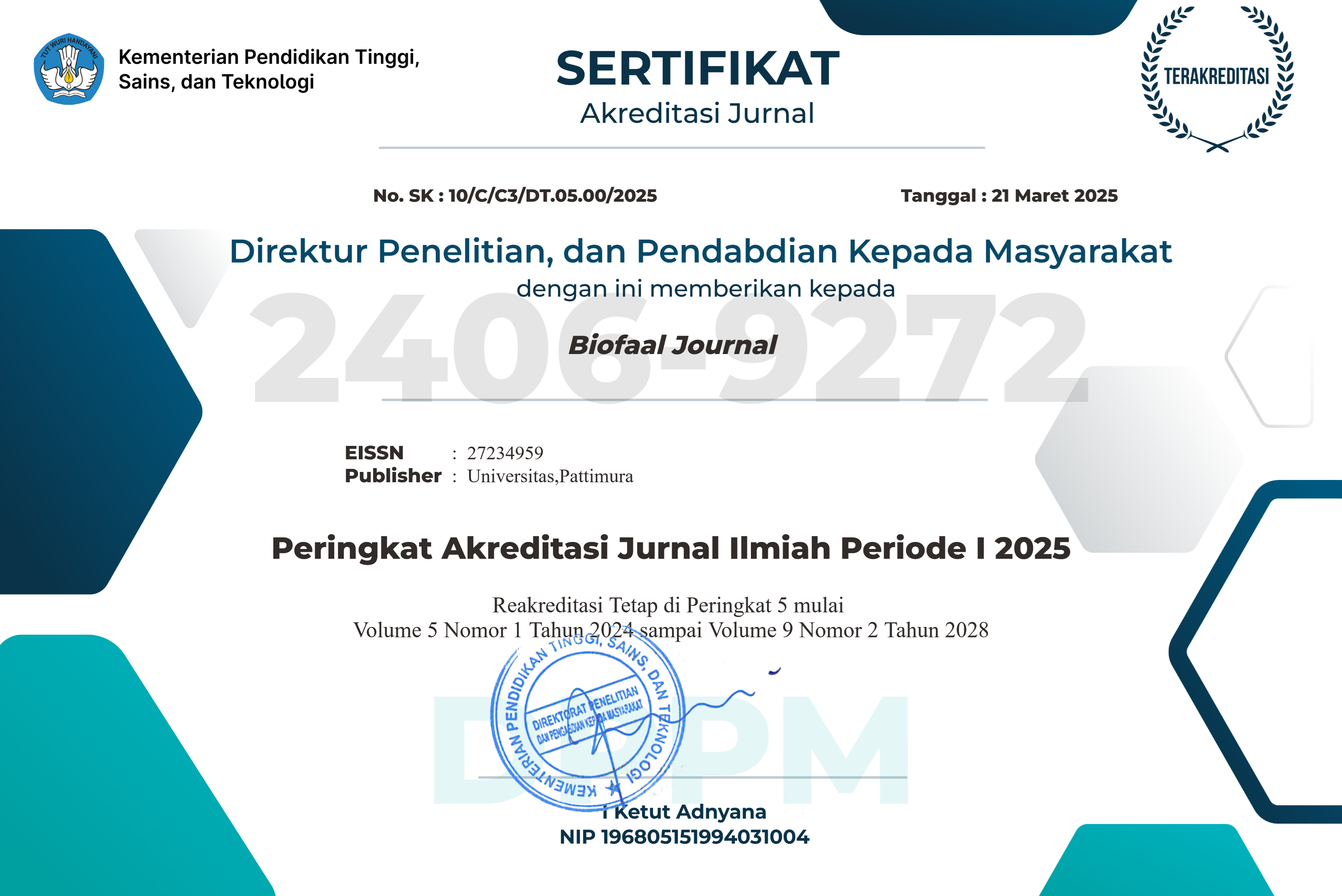STRUKTUR POPULASI DAN POLA DISTRIBUSI PALA (Myristica fragrans Houtt) PADA PERKEBUNAN PALA DI DUSUN MANGKOBATU BANDA NEIRA MALUKU TENGAH
Abstract
Nutmeg (Myristica fragrans Houtt) is a native plant of Indonesia and endemic to the Banda Islands, Maluku. Nutmeg plantations are scattered across various locations in Banda Neira, one of which is in Mangkobatu Village. The population structure in nutmeg plantations is essential for predicting the future regeneration of trees to replace the old ones. This study aims to describe the population structure and analyze the distribution pattern of nutmeg in the plantations of Mangkobatu Village, Banda Neira, Central Maluku. The research used the quadrat method to count individual nutmeg trees for analysis of density, sex ratio, and distribution patterns. The results show that the population structure of nutmeg in the plantations of Mangkobatu Village consists of seedling stages with a density of 250 individuals/ha, sapling stages with 380 individuals/ha, pole stages with 190 individuals/ha, and mature trees with 68.75 individuals/ha. The population structure forms a bell-shaped polygon diagram. The sex ratio of nutmeg in the plantations of Mangkobatu Village is 1:27, which does not align with the recommended ratio for nutmeg plantations. The distribution pattern of nutmeg at the seedling stage is clumped (Ip = 1), while at the sapling (Ip = -0.464), pole (Ip = -0.357), and mature tree (Ip = -0.567) stages, the distribution is uniform.
Downloads
Copyright (c) 2024 Gielldy Lawansuka, Evelin Tuhumuri, Dece Elisabeth Sahertian

This work is licensed under a Creative Commons Attribution-NonCommercial-ShareAlike 4.0 International License.
1. Author retain copyright and grant the journal right of first publication with the work simultaneously licensed under a creative commons attribution license that allow others to share the work within an acknowledgement of the work’s authorship and initial publication of this journal.
2. Authors are able to enter into separate, additional contractual arrangementfor the non-exclusive distribution of the journal’s published version of the work (e.g. acknowledgement of its initial publication in this journal).
3. Authors are permitted and encouraged to post their work online(e.g. in institutional repositories or on their websites) prior to and during the submission process, as it can lead to productive exchanges, as well as earlier and greater citation of published works.








